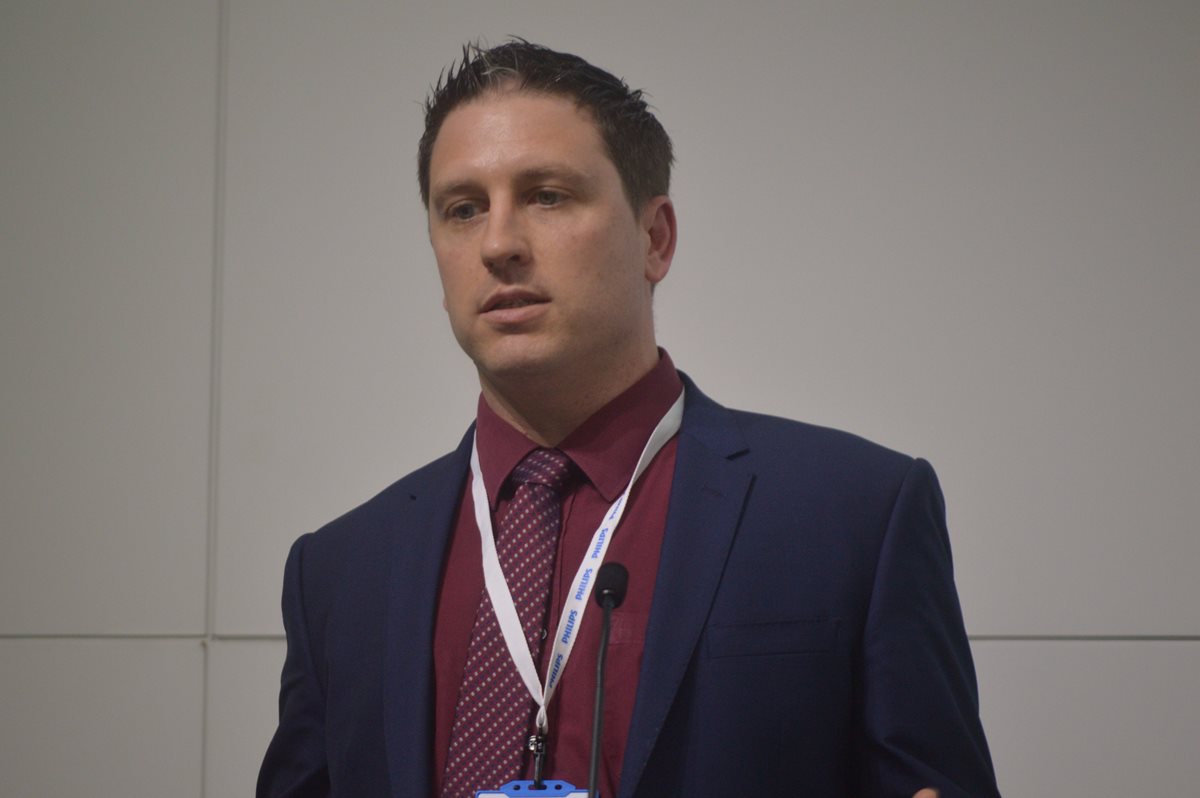Nick Woznitza, Clinical Academic Reporting Radiographer, Homerton University Hospital, introduced this presentation by describing some of the grants available from the Diagnostic Capacity Fund and how UCLH, Homerton and Hackney collaborated in a two-stage project to improve the lung cancer pathway in those areas.
“Lung cancer has a poor outcome in the UK, compared both to other cancers and other countries,” said Nick, “and early, accurate diagnosis is the key to improvement.”
The first stage of the project involves training a cohort of 14 radiographers to report immediately on chest x-ray images, so that should abnormalities be identified, patients can be referred for a CT scan at that time, are then scanned within 24 hours or the same day, and fast-tracked to the lung cancer clinic if needed.
Benefits to the patient include receiving results at the time of the test, a reduced burden on respiratory medicine, improved outcomes and better patient experience, and ultimately less worry for the patient.
The second stage of the project has been a four month pilot scheme involving reporting radiographers doing immediate reporting of CXR, a trial which has been extremely successful and received funding for another 12 months.
“Immediate reporting has drastically reduced time to CT,” said Nick, “and resulted in MDT discussions of cases within a week.”
“Diagnostic capacity is a barrier to positive patient outcomes and reporting radiographers are in a key position to improve this situation, putting the patient right at the centre. Immediate reporting will dramatically improve the patient care pathway for lung cancer.”
